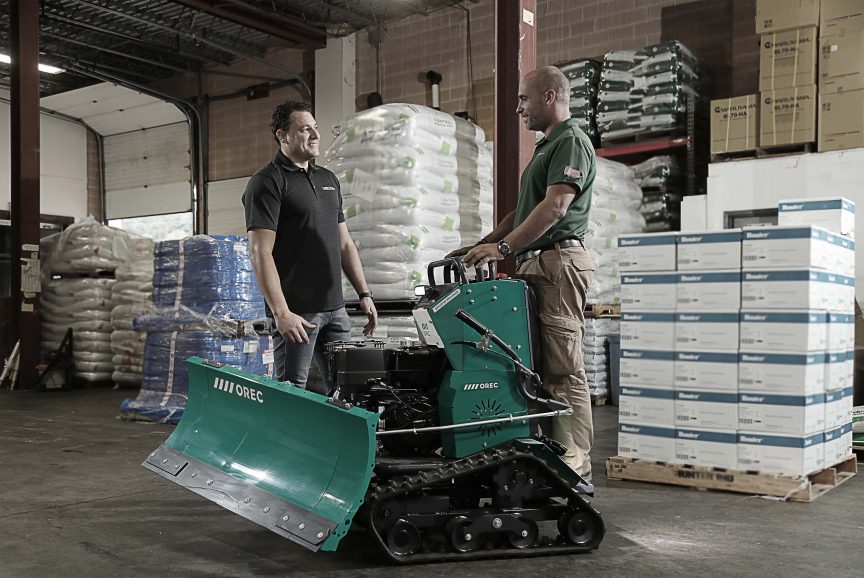Now that the end of winter is near it is important you are ready and thinking ahead to preparing and storing your seasonal equipment away for the upcoming seasons. Although maintenance may be the last thing on your mind, it will save you time and money in the long run if you prepare and have a plan before all the early-spring calls start coming in.
But, what does preparing your winter equipment for summer storage consist of? For items that will be put away for a few months, the task typically includes a thorough cleaning, inspecting and replacing parts, making sure all systems are functioning properly, lubricating, draining or stabilizing fuel and proper storage.
Why You Should Prepare Your Winter Equipment:
- Extend the lifespan of your snow removal equipment.
- Avoid professional, costly repairs at the start of the next season.
- Taking a few simple steps before storing your gas-powered equipment for the spring will safeguard a smoother start to your fall season.
- Remember, when it comes to maintaining equipment, it is always best to refer to your owner’s manual for instructions designed specifically for your equipment.
- To stay protected & covered by your warranty
- Your outdoor power equipment will last for many years with some basic maintenance and care. As you get your equipment ready for summer storage, now is a good time to take a few extra preventive maintenance steps.
Key Steps: Stabilizing/Draining Fuel
- Gasoline that is left in fuel tanks over the long spring and summer can breakdown, leaving gum deposits and varnish build-up that can plug up the entire fuel system. It is best to either drain the fuel system or use a fuel stabilizer. We recommend using a stabilizer in your 4 cycle engines and draining the fuel from equipment with two-cycle engines.
- Adding a fuel stabilizer to a full tank of fuel and running the engine in a couple of minutes ensures the stabilizer is in the entire fuel system. A full tank of fuel prevents water condensation from contamination; so it is best to fill up the tank after running the engine.
Additional Steps:
- Cleaning the underside of your snow removal equipment will pay dividends. The encrusted salt, brine, and debris can trap moisture and may cause rust. Scraping with a putty knife or brush works well, then rinse with water. If you want to go that extra mile, you can even spray the underside of the deck with a silicone based spray to repel water or condensation during storage.
- It’s also a good time to change the oil. Old oil contains moisture and contaminants that may pit bearings and other sensitive engine parts. It is also a good practice to make note of the date and/or operating hour range to remind you of your next oil change interval.
- Remove the spark plug and pour a small amount of oil into the cylinder. This is also a good time to replace it with a new spark plug. Remember to properly gap the plug per manufacturers’ recommendations before installation. Do not over tighten during re-installation.
- Inspect and clean the air filter. Foam filters can be cleaned with soap and water. Replace damaged, dirty, or old air filters.
- Rubber fuel lines can rot, crack, and eventually disintegrate over time with today’s modern fuel; which contains more ethanol than years ago. Check all fuel lines and replace the fuel filter.
- Inspect for worn or missing parts and hardware. This is your chance to tighten loose screws and bolts. Remember to also lube bearings, cables, and moving parts.
- Periodically check on stored equipment to make sure no critters have chewed through wires or have nested in your equipment. Especially if you didn’t use them as much with the mild winter we experienced this season!
- If you own winter equipment that requires a battery, now would be a good time to remove it and check it’s efficiency. Clean the battery well, removing any dust, grease, or dirt. Store it in a cool, dry location unless you are going to use it again for spring equipment. It is best not to store a battery directly on the ground as that can cause it to lose its charge. Place the battery on a trickle charger or come next fall, use a battery charger to bring the battery to full capacity, then reinstall it into your equipment. If you plan on using the same batteries for spring equipment make sure you have checked they are holding a charge properly, and counted all the batteries that survived the winter in case you need to purchase more before spring.
Connect with your local Central rep to learn more and connect with our Subject Matter Experts who can assist you with a wide variety of business functions. We stay at the leading edge of the industry and we’re ready to help you grow!

